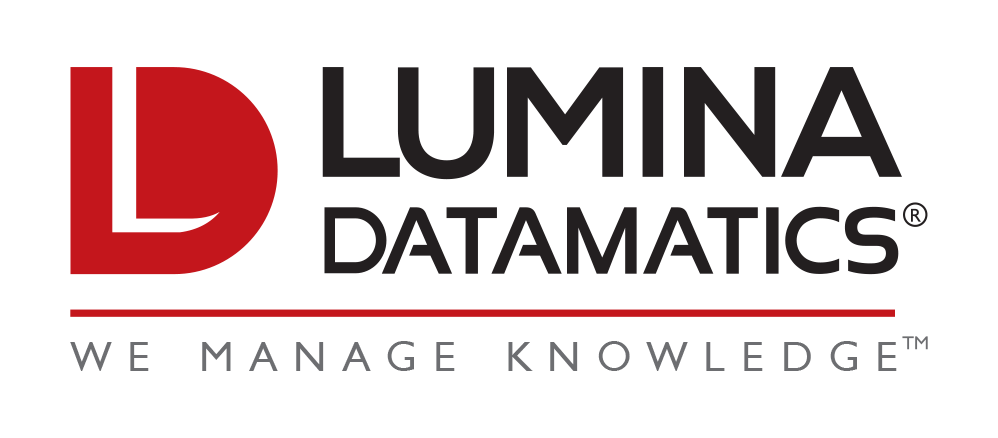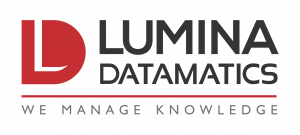Among the most enriching professional successes to be a part of is when a vendor-client engagement transcends those traditional relationship constraints and grows into a genuine partnership. When both teams work together to produce the highest quality products on time and under budget, and the relationship is mutually beneficial to both parties, a rhythm and cycle of trust and innovation start to emerge.
I’ve been a publishing professional in various capacities for 15 years. I’ve worked with companies large and small, I’ve shared the highlights of professional partnerships, and felt the pain of a partnership dissolving.
But a primary characteristic of all these relationships is that I entered into them midstream. In all previous instances, my company already had longstanding relationships and histories of proven successes. A few years ago, I was tasked with a new challenge: the monumental job of developing a relationship with a brand-new client.
I thought to myself: This is it. A brand-new opportunity. A chance to prove ourselves from the beginning. We had no existing history, which was scary because there were no previous successes to point back to when things would inevitably get rocky (no professional relationship is without its ups and downs). But likewise, we had no negative history by which we could be hindered.
So where to start? What follows are some of the key takeaways I took from this challenging, but ultimately highly rewarding experience.
Build Your Team
It starts, as it always should, with the people. I already knew the people on my end. I knew their strengths and weaknesses, and the first step was to carefully put the right people in place to achieve success. I also needed to learn a lot about the client team I was meeting. So I asked questions, tried to learn their team structure, and understand how different individuals fit within the global corporate entity.
Learn from the Past
I decided to use our past challenges as growing points. Before meeting with the client, I sat down with my team to brainstorm on previous challenges and what we could have done to prevent them. By thinking through challenges we’ve faced in the past, we could structure ourselves to prevent those same issues in the future.
And while I knew I wanted to leverage our (extensive) experience to set up a successful new relationship, I also wanted to focus heavily on understanding this specific client’s requirements and learning from their past challenges and successes.
But mostly, I paid attention, and tried to listen before I spoke. We were contributing a lot to this engagement, but there was also a lot to learn from the talented professionals we were now working with, and I tried to not lose sight of that. We needed to be open and flexible enough to recognize that other solutions and processes may sometimes be best for our engagement.
Consider Trust, and How to Build it
Trust was my primary focus from the first handshake. It would have been far more challenging to achieve our collective goals had I not found trusted allies and support within the client’s teams. (In any partnership, finding allies who are trusted within their own organization makes a significant difference; these individuals are key to navigating the waters of working with that client.) I was extremely fortunate to be paired with professionals with years of industry experience, and who were committed to making our new relationship work.
In order to establish trust, I also had to prove myself to be trustworthy. That meant bringing honesty and integrity to every interaction that I had with my new colleagues. If we were struggling with something, I had to be honest rather than glossing over problems or implying that everything was fine. It’s no secret that admitting to errors can be painful—as we never want to admit weakness or gaps to our clients!—but being upfront was critical. One single instance of dishonesty had the potential destroy months of trust-building.
Make Communication Count
Regular communication is critical to the success of any engagement or partnership. I focused on establishing regular meetings, phone calls, video calls, and in-person visits (back when the world was open!) to the client’s office. We also invited the client to our headquarters in both the US and in India to allow them to “peek behind the curtain” with the goal of offering full transparency.
What I found was that there is no substitute for time and care when building a relationship. I had to ensure that all interactions were productive and successful. It’s in no one’s best interest to waste time, so I never scheduled visits or meetings just for the sake of scheduling them. When requesting a portion of someone’s time, I respected it.
With global COVID-19 shutdowns, this is even more challenging, as many of my colleagues (and myself) are juggling working from home with other, personal responsibilities, such as childcare. I’ve adjusted to that by carefully considering how best to use my, and my counterparts’ time. When I schedule a meeting, I set an agenda, stay as close to it as possible, and aim to be respectful of the pre-scheduled start and end times. I also try to subtly monitor the time, and if it feels like we might run short toward the end, start wrapping up or moving to the more critical topics sooner rather than later. Flexibility is key.
Remember, We Are All People
My experiences in developing this new relationship served as a reminder to never underestimate the power of human connection. It’s very helpful to understand people personally as well as professionally. It is almost never a waste of time to spend a lunch hour talking to somebody about their personal lives (if they are willing to share). And likewise, with trustworthiness – if I expect others to open up to me, I must also be willing to open up to them. Frankly, this can be one of the most enjoyable parts of the relationship! I found that I worked much better with people professionally when I had a chance to get to know them a bit more personally over a meal, a coffee, a drink, or a shared experience outside of the office.
This certainly doesn’t mean that personal trumps professional—but rather there is a place for both in a mutually beneficial relationship. My goal will always be to put my customers and their needs first. If I ensure that my team is working hard, doing good work, and acting with integrity, this will ensure success and mutual satisfaction. And success is the surest way to continue to grow the relationship.
Address the Inevitable Bumps in the Road
Unfortunately, challenges are inevitable. As new relationships are built, miscommunications or mistakes are bound to occur, simply because we’re all human.
Knowing that actions speak louder than words, I had to be able to deliver on what I promised (or promised on behalf of my team). I had to hold my team members accountable to failures, and publicly celebrate their successes.
In my role, I have historically been most successful when I was able to see myself as an advocate or neutral mediator, working to manage both the best interests of my clients and my company. I work hard to avoid any defensive, knee-jerk reactions, and to instead view issues objectively, trying to see the client’s perspective. I ask myself, If I were in their shoes, what would I be thinking? How would I respond? It was important to me to honestly consider the answers to these (difficult) questions, even when I knew I might not like the answers I found. But doing so hopefully made it clear that I, and by extension, Lumina, was willing to learn and grow, and reiterated the sincerity of our commitment to forging a true partnership.
When hearing criticism or escalations, I made sure to objectively analyze the situation from the client’s perspective, and view the situation without bias or emotion. The steps/principles I followed then (and now) are:
- Correct the issue as immediately as possible. This was, and is, the most urgent priority—fixing the problem and delivering on your commitment.
- Conduct a deep analysis to determine where Lumina fell short, and most importantly, why. Part of this involves asking: What could have been done to prevent the situation, either on our side or the client’s? How can I turn this into an opportunity for learning and ensure it doesn’t happen again?
- Objectively and thoroughly present the findings. It’s important to honestly own up to mistakes, and if applicable, respectfully request any changes on the client’s side that would help prevent similar future issues.
- Finally, demonstrate concrete action items for corrective and preventative actions, and work together to set the difficulties of the situation behind us.
Accept and Acknowledge Where You’re at Personally—and Grow from It
Being able to see both sides of a relationship is simultaneously one of the most challenging but also one of the most rewarding parts of my job. It’s something that I genuinely love. But even so, I’m guilty of having lost sight of that at times, including in the recent past.
I could blame it on living amid a global pandemic, the pressure of being locked in while trying to work with 3 children at home, or it being an exceptionally busy time of year. Whatever the reason, I sometimes lost sight of the most important part of my job—empathy. As a result, there were a few tense discussions that I probably could have (and should have) mediated more effectively.
It was only after I paused for some self-reflection that I realized where I had failed. Recognizing that I did not do my best was not easy or satisfying, but doing so in an honest manner provided me with the opportunity to grow and to be better in the future.
Some of the new or refined methods I use are:
- Remember how beneficial it is to see both sides of an argument. Commit to keeping that perspective in professional interactions.
- Make time for big picture objectives. It’s easy for me to get bogged down in everyday stresses or frustrations, especially when I’m feeling pulled in multiple directions or short on time. But I’ve found that these are actually the most beneficial times for me to step back and remember what I love about my job, what I hope to achieve, and how to get there.
- Write down objectives. Anytime I’ve felt directionless, I’ve started by writing down my objectives. Sometimes I’ll share that list with my supervisor to either confirm my ideas, add to the list, or redirect me to ensure that I’m bringing as much value to my position as possible.
It’s a good idea to regularly reconcile goals and what we collectively hope to achieve in order to make sure the partnership is headed toward mutual satisfaction. If we are in disagreement over any fundamental aspect of our partnership, then it’s best to know so that we can take action together to ensure we are all working together to achieve our goals.
In the end, I can point to successes and gaps as I navigated the waters of forming this new relationship. One key takeaway that I’ll always remember is that the work is never done! Humans change and grow as time moves on, so as long as I remain in partnership with this client, I will always have to cultivate and grow the relationship. But I am satisfied by the groundwork we have laid, and enjoy the promise of where we stand now, which is poised to continue our successes, develop new innovation, and continuously find improvements together.
Have any thoughts or want to talk to the author of this post? We’d love to hear from you! Email the author or learn more about Lumina Datamatics.





0 Comments